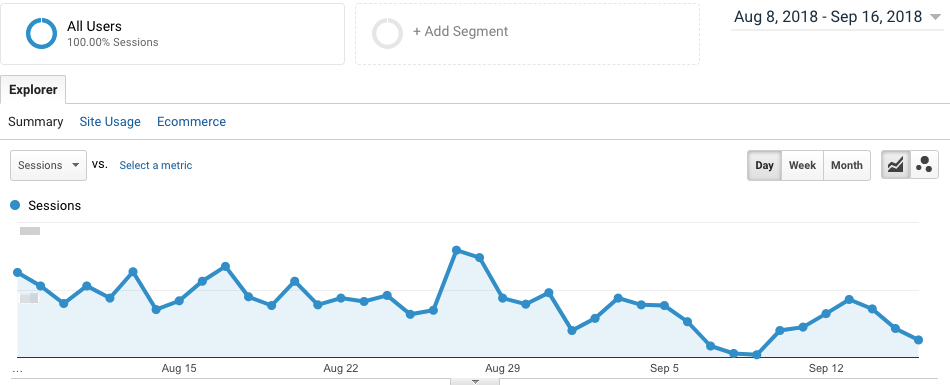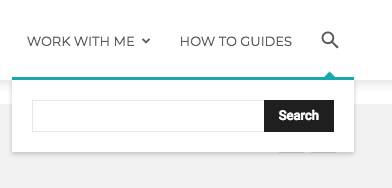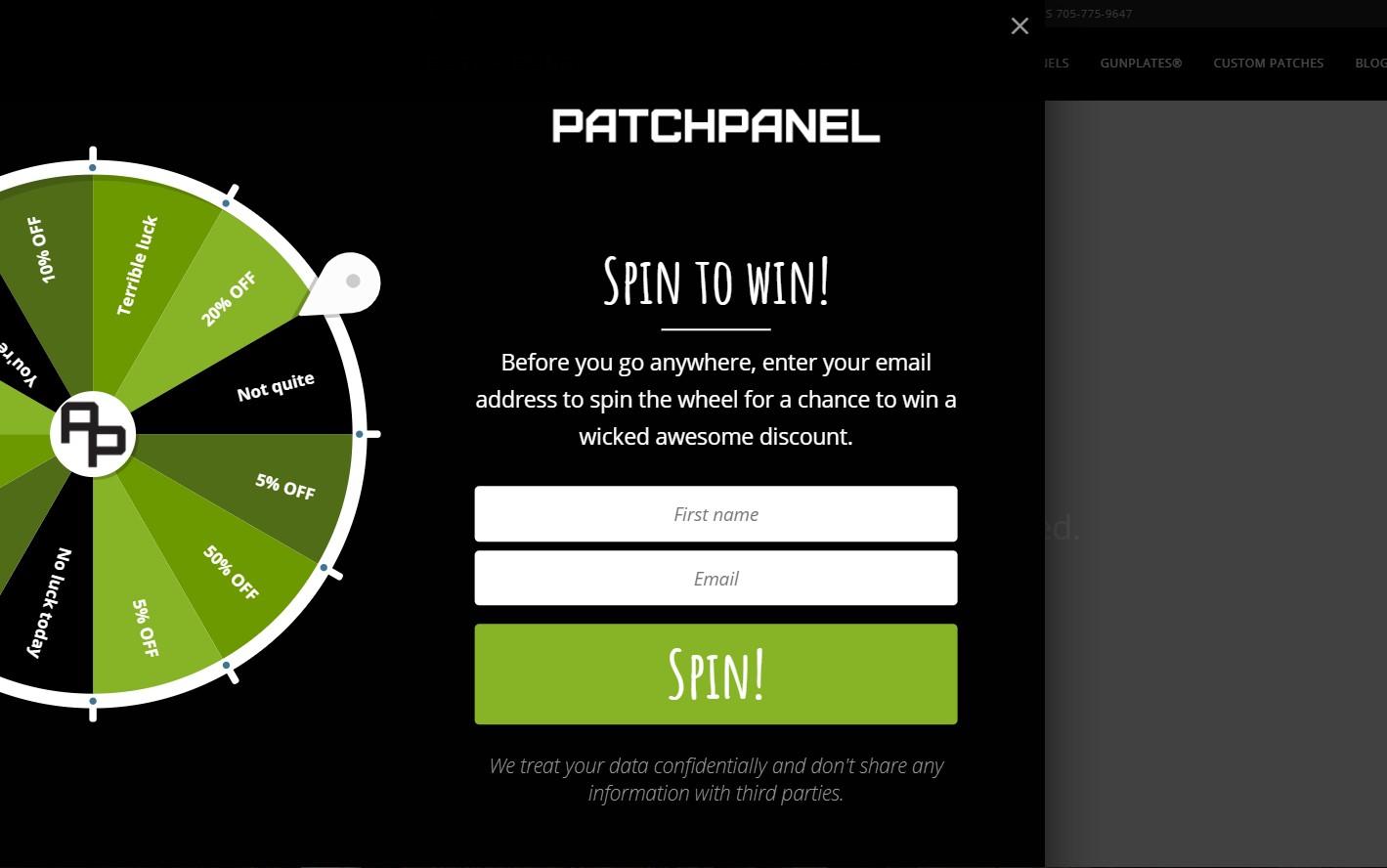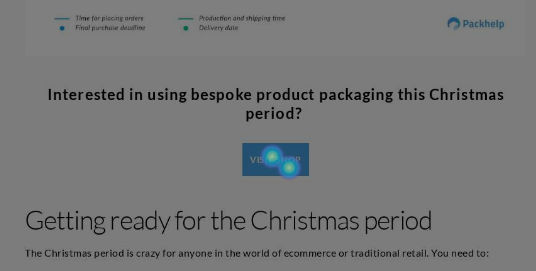Table of Contents
There’s nothing else quite like your product. Your branding looks fantastic and your website is just the way you want it.
But do they all work together to achieve the same thing? Are they all presenting the same message?
A coherent message is crucial to presenting your business in a professional, trustworthy manner.
Luckily, each one of these touchpoints is under your control and can be used to tie everything together…
…if you know how.
In this article, you’ll learn what marketing touchpoints are, where to find different touchpoints in your customer’s journey, and more.
Implementing a customer touchpoint strategy is essential to improve customer satisfaction, build a loyal customer base, deliver better digital experiences, and drive growth.
First, let’s take a look at exactly what customer touchpoints are.
What is a customer touchpoint?
Touchpoint is a fancy sounding word. If you’re new to the world of ecommerce, it’s a word that makes you sound like you know what you’re talking about.
But believe it or not, it’s pretty self-explanatory.
A customer may find your business on Facebook, on a review website or via word of mouth. Having control over as many of your touchpoints as you can is crucial to delighting your customer.
Do you still need a bit more clarification?
A touchpoint is an interaction that might alter the way that your customer feels about your product, brand, business or service. It can happen before, during or after a purchase.
Before you can control your marketing touchpoints, you need to know exactly what your customer journey touchpoints are.
Why are customer touchpoints important?
Customer touchpoints are critical for several reasons:
- Build relationships: Every interaction with a customer is an opportunity to strengthen the relationship. Whether it’s through a social media post or a customer service call, moments of customer contact help establish trust and loyalty.
- Enhance customer experience: Touchpoints provide insights into the customer journey, allowing businesses to tailor experiences that meet customer needs and preferences. A seamless and positive experience at each touchpoint can significantly enhance overall satisfaction.
- Gather valuable feedback: Each touchpoint is a chance to collect feedback. This feedback is invaluable for understanding customer expectations and identifying areas for improvement. For instance, post-purchase surveys can highlight what customers love about your product and what they don’t.
- Drive conversions: Effective touchpoints can guide customers through the purchasing process, addressing concerns and providing necessary information. This guidance can turn potential leads into actual sales.
- Create competitive advantage: By optimizing and strategically managing touchpoints, businesses can differentiate themselves from competitors. Offering exceptional experiences at each touchpoint can be a unique selling point that attracts and retains customers.
Customer touchpoint examples
Now let’s delve into some key customer touchpoint examples that can significantly impact your online presence and overall conversion rates.
1. Social media platforms
Social media platforms serve as powerful touchpoints to engage with your audience. Utilize platforms such as Facebook, Instagram, Twitter, and LinkedIn to connect with your customers.
Share valuable content, respond to queries promptly, and create a sense of community around your brand.
2. Online advertising
Online advertising, whether through search engines or social media, is a direct touchpoint with potential customers. Tailor your ad content to resonate with your target audience, employ compelling visuals, and ensure a seamless transition from ad click to conversion.
3. Content
Content, including blog posts, articles, videos, and infographics, acts as a touchpoint by providing valuable information to your audience. Quality content not only attracts visitors but also establishes your authority in your industry, fostering trust and encouraging conversions.
4. Customer reviews
Customer reviews and testimonials are crucial touchpoints that influence potential buyers.
Encourage satisfied customers to leave reviews and address any concerns promptly. Positive reviews can serve as powerful social proof, instilling confidence in prospective customers.
Additionally, conducting customer feedback surveys can help gather insights into post-purchase experiences and identify areas for improvement.
5. Referral programs
Leverage the power of word-of-mouth through referral programs. When satisfied customers refer others, it not only creates a touchpoint between your brand and potential customers but also enhances customer loyalty.
6. Thank you emails
After a purchase or engagement, sending personalized thank you emails creates a positive touchpoint. Express gratitude, provide order details, and include relevant recommendations or exclusive offers to encourage repeat business.
These emails are part of the broader customer service touchpoints that impact the overall customer experience and retention.
7. Billing process
The billing process is a critical touchpoint that can impact customer satisfaction. Ensure transparency in pricing, use Zintego Invoices and Receipt to create professional-looking and clear online invoices, and offer easy-to-access customer support for any billing-related queries.
8. Renewal process
For subscription-based services, the renewal process is a crucial touchpoint. Streamline the renewal experience, offer incentives for renewal, and communicate the value customers receive by continuing their subscription.
9. Loyalty programs
Loyalty programs create ongoing touchpoints with customers, encouraging repeat business. Reward loyal customers with exclusive discounts, early access to new products, or other perks that incentivize continued engagement.
Additionally, customer service teams play a crucial role in maintaining a positive relationship with current customers through various post-purchase touchpoints.
How to identify customer touchpoints
There are 3 times where your customer can experience your brand in relation to purchasing:
- Before purchase touchpoints
- During purchase touchpoints
- After purchase touchpoints
It’s within these times where a customer will ‘touch’ your brand in some way. It is these ‘some ways’ that you need to figure out.
For example:
- Before purchase
- PPC advertising
- Blog
- Product reviews
- During purchase
- Website or marketplace
- Email support
- Flash sale
- After purchase
- Invoices
- Thank you for your purchase note
- Customer feedback survey
This is just a small handful of the dozens and dozens of touchpoints out there. Each point here may encapsulate many more.
Take, for example, ‘PPC advertising’. This point covers things like Facebook boosted posts, Google AdWords and any other form of promoted content.
Look at your data to find your touchpoints
To find what touchpoints you’re already using, look at an analytics suite, like Google Analytics.
Each channel that brings traffic to your store is arguably a touchpoint.

Look at how you present your brand in each channel and ask yourself the following:
- Is my branding consistent on all these channels?
- Are any channels converting customers more than another channel?
- Is there anything unique about how I’m presenting my brand/product on each channel?
Answering these questions can show you which of your touchpoints are optimized and converting well.
I want to make this clear – Quality over quantity.
What I mean here is that it’s better to have a few highly-converting touchpoints than many touchpoints that don’t covert well.
So before you go about adding more ways to convert a browser into a customer, look at optimizing the touchpoints you’ve already got going.
For example, if you’re finding that you’re having a lot of customers abandon their carts, this touchpoint isn’t converting for you.
Find out why they’re abandoning carts and fix it.
(Tip: your shopping carts are probably being abandoned because of unexpected postage fees or poor shopping cart design.)
Only then should you consider adding more touchpoints to the mix!
So now you know how to find the touchpoints you’re currently using, let’s take a look at how to add more touchpoints.
More touchpoints = More conversions?
Once you’ve optimized your online store’s current conversion rate, then start looking at adding other touchpoints to improve the entire customer journey and convert a user.
Here are a few touchpoints that you can add in order to help convert readers into customers.
Search bar
Are you selling a wide range of products in your online store? Having a search bar lets your customer engage with your brand and find exactly what they want.

What’s more, a search bar is another great way to gather customer data. You’re able to see exactly what customers want to see when they’re on your site.
Popups
Everyone hates popups.
Or do they?
Data shows that they’re a great tool to grab people’s attention. In fact, the average conversion rate for a popup is around 10%.
This is a touchpoint that, despite what people say, can have a profound effect on your conversion rate.
How can you use a popup as a touchpoint?
Put an exit intent popup on your web store so that just as people are about to leave without buying, they’re offered a discount code of some kind!
Take it a step further and add a gamified exit popup.
Ecommerce Entrepreneur, Ronnie McKenzie, says, “Popups if utilized correctly, can help drive exceptional results for a brand.”
Using a gamified popup can result in opt-in rates around 15-20% or more, depending on what you offer.
It takes something that used to be somewhat tiresome and transforms it in a way that creates a win-win situation for both parties.
This lucky wheel popup is a great example of a gamified popup.

When a user shows intent to leave, they’re presented with a spinning wheel where they can actually ‘win’ a discount!
Your user enters their email and name, and then they get a free spin. No matter what, your user is gifted with some kind of reward, and you get a new lead!
CTA button is a post
Blog posting is a versatile way to build your credibility.
If you’re using your blog and content marketing as a touchpoint (and you should be), you can upgrade your content by using CTA buttons in the text.
CTA (or call to action) buttons are simply buttons placed within the body or your blog that call for a user to take an action.
It can be to go read another blog, visit a product page, or claim a special discount.
In the following image, you can see a HotJar track-clicking heatmap that’s placed on the Packhelp blog. In it, you can see how readers are clicking on the CTA in the body of the copy.

As an ecommerce seller, you can do the same.
If you’re using your blog to educate your readers about problems that your product solves, strategically place CTAs so that the reader wants to learn more about your product.
CTAs are a great touchpoint to employ when you want to encourage your reader’s curiosity.
FAQ
What factors should businesses consider when deciding on feasible touchpoints?
When deciding on feasible touchpoints, it’s crucial to empathize with customers and understand their journey while making a purchase decision. This involves identifying where customers typically explore first, how they arrive at a decision, and what actions they take if they encounter any product-related difficulties.
You also need to assess the available resources and information that customers may need during their journey. Determine which touchpoints are easiest to implement, considering the size and budget of the company.
How can businesses use customer journey maps to identify and optimize touchpoints?
A customer journey map is a chronological representation of a typical customer’s interactions with a business. It allows businesses to track every step of the customer’s journey, from initial awareness to post-purchase support.
By mapping out this journey, you can gain insights into the various touchpoints where customer engagement occurs. An example customer journey can help illustrate the steps a customer takes as they make a purchase decision.
Customer journey maps also serve as a valuable tool for spotting missed opportunities to engage with customers. By scrutinizing the map, you can identify gaps in the customer journey where additional touchpoints can be added to create a more seamless experience. For instance, if there’s a lack of communication after a purchase, you can introduce post-purchase follow-up touchpoints to show appreciation and provide support.
How do customer touchpoints influence the customer experience?
Each touchpoint provides an opportunity for businesses to make a positive impression and build a strong relationship with customers. A positive experience at every touchpoint enhances customer satisfaction, loyalty, and advocacy.
On the other hand, any negative or inconsistent touchpoints can create friction and lead to customer dissatisfaction or even abandonment.
By understanding the impact of touchpoints on the overall customer experience, you can effectively identify areas of improvement and take necessary actions to enhance the journey.
Wrapping up
Touchpoints, and knowing how to leverage them, are a potent feature of conversion rate optimization.
They’re also one of the few areas where the creative elements of your brand, like branding and tone of voice, work alongside technical aspects.
In this article, you saw the best way to get started with touchpoints and a few extra touchpoints you may like to include.
You’re hopefully now confident enough to go out there and work these touchpoints to better help your readers become customers.
About the author
Phil Forbes is a bearded Australian living in Warsaw, Poland. Digital Marketer at Packhelp, who enjoys helping and watching small ventures start, learn, grow and thrive. He takes care of expatspoland.com.
Migration has never been easier
We made switching a no-brainer with our free, white-glove onboarding service so you can get started in the blink of an eye.

What should you do next?
Thanks for reading till the end. Here are 4 ways we can help you grow your business:
Boost conversions with proven use cases
Explore our Use Case Library, filled with actionable personalization examples and step-by-step guides to unlock your website's full potential. Check out Use Case Library
Create a free OptiMonk account
Create a free OptiMonk account and easily get started with popups and conversion rate optimization. Get OptiMonk free
Get advice from a CRO expert
Schedule a personalized discovery call with one of our experts to explore how OptiMonk can help you grow your business. Book a demo
Join our weekly newsletter
Real CRO insights & marketing tips. No fluff. Straight to your inbox. Subscribe now
- Posted in
- Ecommerce
Partner with us
- © OptiMonk. All rights reserved!
- Terms of Use
- Privacy Policy
- Cookie Policy
Product updates: January Release 2025








